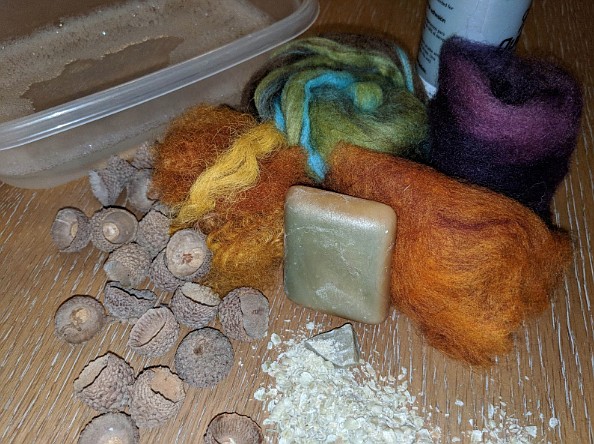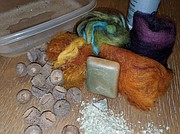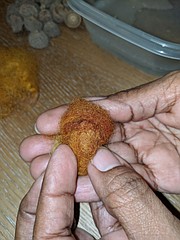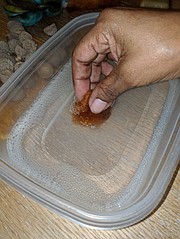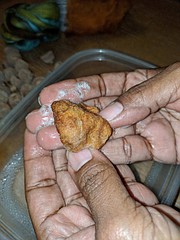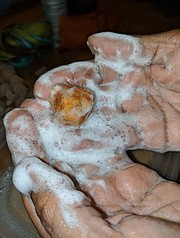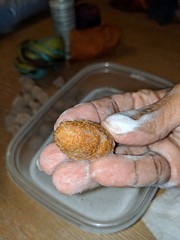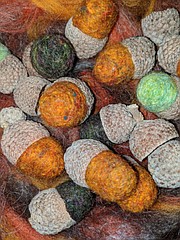Critters of North Idaho: Northern Idaho Ground Squirrel
What pops into your mind when I say … “Squirrel!” Aside from that line in the Pixar movie “Up,” you probably just envisioned a small furry rodent with a big fluffy tail that lives in trees, eats nuts, and often buries nuts for later. This is true of tree squirrels, but the squirrel we’re going to focus on is the ground squirrel, specifically the northern Idaho ground squirrel (Urocitellus brunneus).
The northern Idaho ground squirrel is one of the smallest species of ground squirrels, measuring only 9 inches long and weighing 3.8 to 9.1 ounces. Their furry pelts are most often dark reddish-gray in color, and as you probably already figured out based on their name, one of the main things that distinguishes these little guys from their tree squirrel cousins is that they spend most of their time on the ground. Other differences include their smaller size and less fluffy tail. Northern Idaho ground squirrels are not so easy to distinguish however from their close cousins, the southern Idaho ground squirrels. Their natural habitats sometimes exist in the same regions. In fact, they are so similar that scientists originally classified them as belonging to the same species.
Northern Idaho ground squirrels don’t like the cold or the lack of food in the wintertime, so they have a short five-month window every year to feed, mate and raise their young before returning to their burrows for autumn/winter hibernation. For these rodents, the year begins in mid-late spring when they awake from hibernation undoubtedly famished! The favored habitat of the northern Idaho ground squirrel is dry meadows that are dominated by grass and surrounded by forests of Douglas fir and ponderosa pine. Here, they can find just about everything that’s on their menu: grass, flowers, roots, bulbs, seeds and the leaves of low-growing plants (e.g. dicots), with a side of insects. Yummy! In turn, these squirrels are near the bottom of the food chain, meaning they’re on just about everybody’s menu. Badgers, hawks, falcons and sometimes weasels all happen to fancy northern Idaho ground squirrels. What’s a squirrel to do with all these predators around?
Ground squirrels must always be on the lookout for incoming predators. This is why they have large bulging eyes on the sides of their heads; they have an almost all-round view of their surroundings. Female northern Idaho ground squirrels have an additional defense against predators because they often forage in groups consisting of other females and their offspring. With more eyes keeping watch for predators, it is less likely a predator will catch the animals by surprise. When a predator is spotted, the ground squirrels make high-pitched alarm calls to warn the rest of the group and they all scurry to the nearest burrow or some other hiding spot.
Amid stocking up enough fat to last through the autumn and winter, the northern Idaho ground squirrel must also make time to raise a family. Rodents are well-known for their ability to reproduce; for a case in point, consider the house mice. A single female house mouse not only breeds year-round, but they can produce 5-10 litters of 5-6 offspring per year! As if that’s not enough, these offspring are ready to have children of their own in a mere 30 days! Idaho ground squirrels on the contrary only produce one litter of between 2 and 10 offspring a year. The baby ground squirrels are weaned and leave the birthing burrow for good in late May or early June. They’re officially on their own two or three days after leaving the burrow, and it’s approximately one or two years before they can reproduce. As we’ll find out in a few moments, this relatively slow reproduction rate might turn out to be the northern Idaho ground squirrel downfall.
At the approach of late July or early August, the northern Idaho ground squirrel’s yearly activities are over. Fattened up by a summer of feeding, they crawl into their burrows for an eight-month hibernation. They expect to restart their year in the spring, but wouldn’t it be horrible if these little ground squirrels didn’t have a home to wake up to? Unfortunately, this is exactly what has happened to most northern Idaho ground squirrel populations. Due to the destruction of their habitat by human encroachment (along with poisoning and indiscriminate shooting), these little animals were declared critically endangered by the IUCN (International Union for Conservation of Nature).
Fortunately, things are starting to look brighter for these ground squirrels. In recent years, much work has been done to preserve their already-existing habitat and link smaller populations together so they can in-breed. If such progress continues, northern Idaho ground squirrels will still continue to wake up to the warm spring breeze and meadows full of grass and all their summertime delicacies.
HOMESCHOOL PROJECT
FELTED ACORN POTPOURRI
In the previous article we had a needle felting project, which of course does not use water. This time we have another felting project for you, with the use of water. It is called wet felting.
Wet felting is much safer for younger children than needle felting.
Supplies Needed:
Roving (Color of Choice)
Acorn Caps
Olive Oil Soap (Unscented)
Water
Non-Toxic Craft Glue
Essential Oil (Scent of Choice)
Container or Dish
Food Grater
Felting Needle, All-purpose (Optional)
••• These supplies can be purchased from an arts and crafts store and online.
Natural fibres are best for this project. I used sheep roving, but alpaca roving works just as well.
How To:
1. Place hot water in a container. Make it as hot as you can tolerate. You do not want to burn yourself.
2. Add shaved soap pieces.
3. Take a small amount of fibre and roll it as tight as possible. How much fibre you need will depend on the size of your acorn caps. Keep in mind, the fibre will shrink some during the felting process. Do not let it go.
4. Place fibre in the soapy water. Do not let it go yet.
5. Hold the fibre with one hand and start squeezing and rubbing it with the other hand. This will begin the felting process. Then switch hands and do the same thing. Continue this process until it feels firm enough to roll it in your hands. Once it is firm enough to roll then you can continue squeezing, rubbing and shaping on all sides. Your goal is for your felted acorn to resemble the shape of an egg.
6. Let the felted acorns air dry or place them in a mesh bag and toss them in the dryer.
7. After the acorns are completely dry, glue them into the acorn caps.
8. Place the acorns in a decorative bowl and use several drops of your favorite essential oil.
If you are so inclined to needle felt your acorns, follow numbers three, seven and eight of these instructions.
Homeschool Project Provided by: angel dominiq
angeldominiq13@gmail.com
If you are unable to find any of the supplies or if you do not understand any part of the instructions please contact me.


